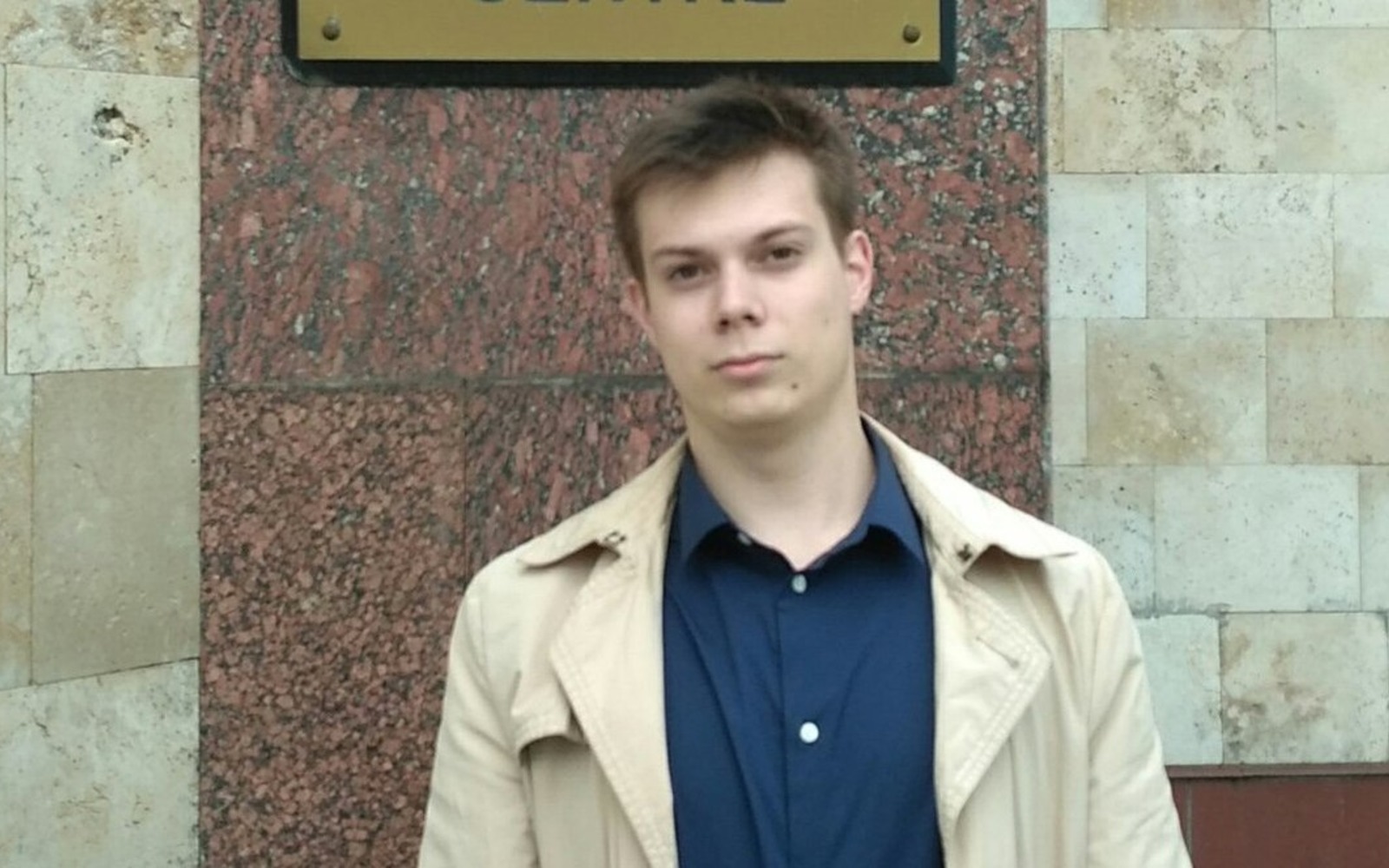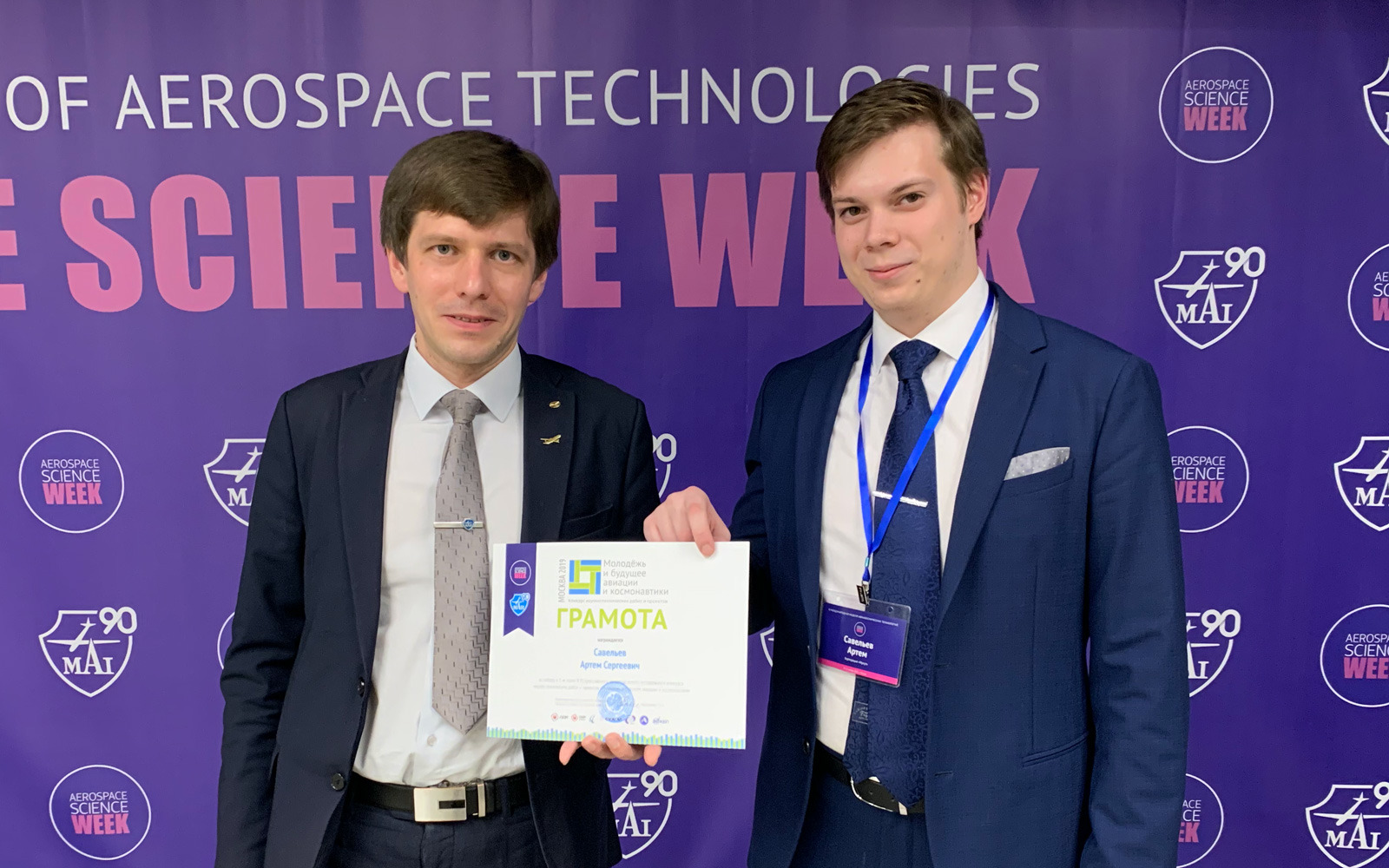Evaluate the safety before flight: the MAI student’s project received a grant

In August, the Russian Foundation for fundamental research (RFFR) allocated grants of 1.2 million rubles for the implementation of 13 projects of young scientists of the Moscow Aviation Institute. The selection was carried out within the framework of the basic research competition "Postgraduates". One of the winners was Artem Savelyev, a post-graduate student of the Department 703 "System design of airline complexes» of the Institute No. 7 «Robotic and intelligent systems".
Experts highly appreciated the project "Application of a model-oriented approach to assessing the safety of civil aircraft on the example of an avionics complex", which Artem Savelyev is working on under the guidance of the head of the Department 703 Yevgeny Neretin. The young scientist shared details about the research and told about other areas of his work.
What was your educational trajectory in MAI?
It started with the Institute No. 3 "Control Systems, Informatics and electric power engineering" and included a year of study at the Institute No. 4 "Radioelectronics, Communications and information security". In other words, in order to get to the Institute No. 7, I had to collect the corresponding number of other subdivisions of the MAI.
While still a student at Institute 3, I met my current research supervisor, Yevgeny Sergeevich Neretin. It was he who inspired me to write my dissertation at the Department 703, which he heads. There are many scientific projects related to modern system methods of developing aircraft systems, including those for civil aviation. One of the scientific trends in this field is a model-oriented approach to designing and evaluating the safety of aircraft systems. That is what we do at my work at Irkut Corporation, so the choice was, we can say, predetermined. Moreover, Yevgeny Sergeyevich is happy to take large and ambitious tasks of this kind.

What is the essence of the project for which the grant was received?
The operators of the aircraft always strive to optimize their expenses, while increasing the safety and reliability of equipment. In this case, a model-oriented approach to design comes in. If earlier it was necessary to develop an aircraft "on paper" and try not to make a mistake, assemble the prototype, conduct bench and flight tests to check certain characteristics, now most of the work has been transferred to the model form. To do this, complete mathematical models of electronic and mechanical parts are developed (for example, in MATLAB Simulink or Ansys SCADE) and thousands of tests are run. This way you can save both working hours and equipment resources. Of course, real tests "in iron" are not canceled, but the product that comes out on them is almost always devoid of the "childhood diseases " inherent in all new developments.
But this method has been known for a long time and is successfully used in Russia and the world. Moreover, students of the 703 Department have the opportunity to try it during practical classes under the guidance of leading experts involved in the development of modern aircraft.
My work goes beyond that. How is it possible to catch potential failures during the development phase? How can one check their criticality? How can one prevent them from occurring if they are dangerous? The so-called model-based safety assessment is one of the most popular and rapidly developing areas in the field of aircraft construction. Here, as they say, you need to catch your luck before all the most interesting topics are sorted out.
What are the tasks to be solved within the project?
We set important and complex tasks. This includes developing models of airborn equipment failures and conducting real-time simulations to understand the physics of failure and how to parry control systems or flight personnel. We will also investigate the occurrence of common reasons for failure. It is necessary to find qualitative and quantitative ways to prevent one-time occurrence of violations that can increase the probability of failure. Another task is to automate the verification of flight crew warning devices about the problem.
Each task is important for the project and requires detailed study and modern equipment, which is what the grant funds will be used for.
What is the practical purpose of the work?
Airlines do not want to wait too long for new planes and neither they want them to be of poor quality — unreliable, unsafe. Solving these problems is of great practical value: we can conduct thousands of tests before the maiden flight, identify and fix hundreds of problems. In this way, we will accelerate the work on evaluating the safety of the aircraft and its systems and, accordingly, improve the quality of development.
What is the current stage of the project and what are the forecasts for its development?
There have been received quite concise results for some tasks already. Works on creating failure models have been presented at various international conferences. For two years, scientific and technical competitions of Irkut Corporation demonstrated the results of works devoted to high-quality ways to prevent common causes of failure. By the way, both times the project took the first place in its section.
Some of the work has yet to be completed. In the near future, we plan to develop a more complete list of studied failures and integrate them into a model of a real aircraft using control simulators. For this purpose, special simulators — something like game joysticks-will be purchased for Department 703. I expect that students of the Department will be interested in such "toys". Perhaps some of the work can be done together with students who will be close to this topic.
Which companies are interested in the results of the work?
Preliminary results of research in the field of prevention of common causes of failure have already been implemented in the development of the MC-21 aircraft. First of all, they are used by the main developer (PJSC Irkut Corporation) and its developers — PJSC MIEA, French representatives of the Collins group of companies. I expect that further developments will also be implemented in the design processes, which will allow us to create products that are competitive at the international market.
Are you working on other projects simultaneously?
If we talk about scientific work, I study the problems of interaction between active sidesticks and the autopilot. Using the tracking mode of sidesticks, in which when the autopilot is running, they are moved in the same way as they would be manipulated by a person in manual mode to reach a given position, we can allow the pilot to quickly recognize failures and parry them in adverse weather conditions.
Surprisingly, there are no active sidesticks on any certified civil vessels, they are implemented only in the latest Gulfstream business jets. As part of MC-21, we are trying to correct this issue. And, of course, there are also many challenges related to the operation, reliability, and security of this function.
As far as engineering is concerned, I am currently assessing the safety of the MC-21 integrated control system. This is where my research papers start from."
What are your plans for the future?
Starting this academic year, I will conduct a course of lectures on avionics for foreign students who will study at our Institute No. 7 at the exchange program with Chinese universities. This is exciting, because the selection of teachers in the pool was based on strict criteria — both professional skills and good command of English were very important. I hope that we will be able to find many future colleagues in the program of the Chinese-Russian CR-929 project among the students.
If we are speaking about long-term plans, then, of course, the key goal now is to complete the thesis and defend it. After that, I will look for new challenges. And I really hope that they will be directly connected with the MAI Department 703, which has already become my home!